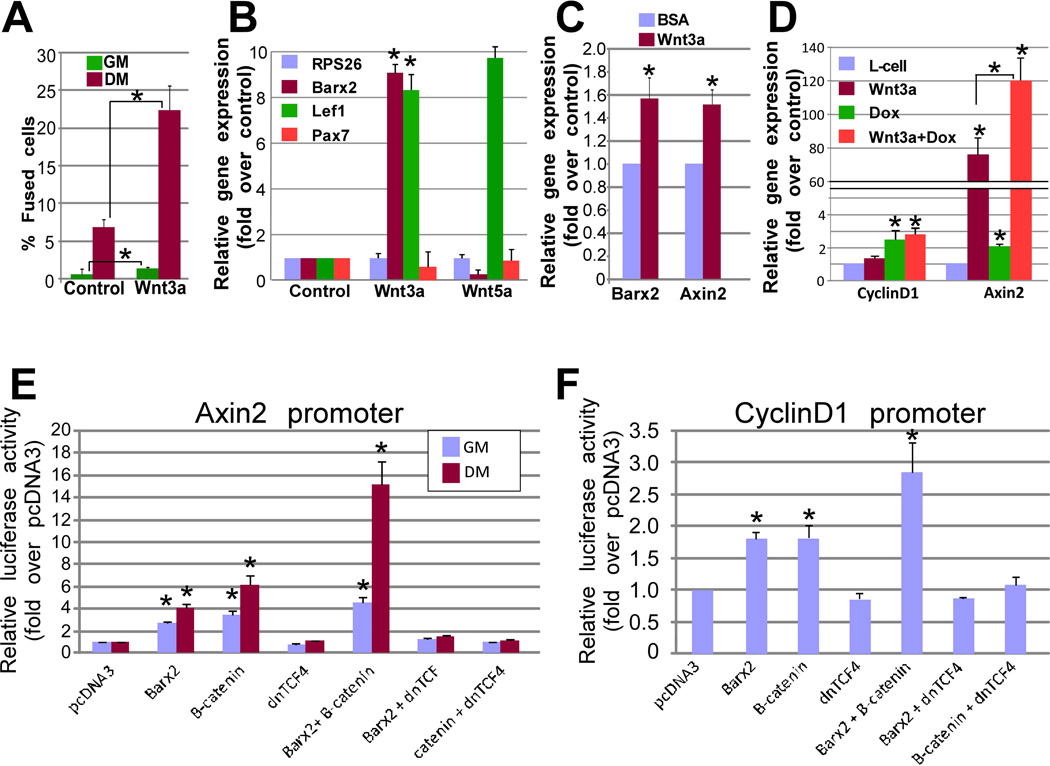Figure 1.
Wnt3a induces differentiation and Barx2 expression in primary myoblasts, and Barx2 regulates Wnt-responsive target gene promoters. A. Primary myoblasts from TOPEGFP mice were treated with Wnt3a-conditioned media (Wnt3a-CM) or control media (L cell-CM) diluted in growth media (GM) or differentiation media (DM). The proportion of fused or elongated cells (myotubes and myocytes) was measured after 18 hours. B. Expression of Barx2, Pax7 and Lef1 were measured in primary myoblasts treated with Wnt3A-CM, Wnt5a-CM, or control L-cell-CM diluted in GM. Barx2 mRNA was increased by Wnt3a-CM but not Wnt5a-CM. Data was normalized to the housekeeping gene RPS26 and is the average of two experiments performed in duplicate. C. Expression of Barx2 and Axin2 mRNA in TA muscle from wildtype mice after induction of injury using cardiotoxin followed injection of either BSA (control) or 10mg/ml Wnt3a as described in the methods. D. Expression of Axin2 and cyclinD1 in Barx2-TET-ON C2C12 cells after induction with Doxycycline (to induce Barx2 expression) or Wnt3a; data is derived from two experiments performed in duplicate. E. Regulation of the Axin2 promoter by Barx2 and β-catenin in C2C12 cells; activity was assayed 48 hours post-transfection; the data is derived from at least 3 experiments performed in duplicate. F. Regulation of the cyclinD1 promoter by Barx2 and β-catenin in C2C12 cells; activity was assayed 48 hours post-transfection; the data is derived from at least 3 experiments performed in duplicate. For all data, asterisks indicate a significant difference from the control condition as assessed using Students T-Test with * P<0.05 and ** P<0.01.

